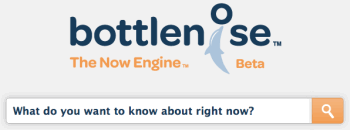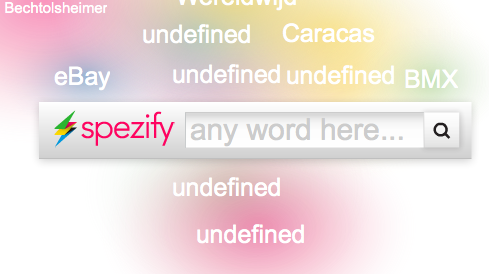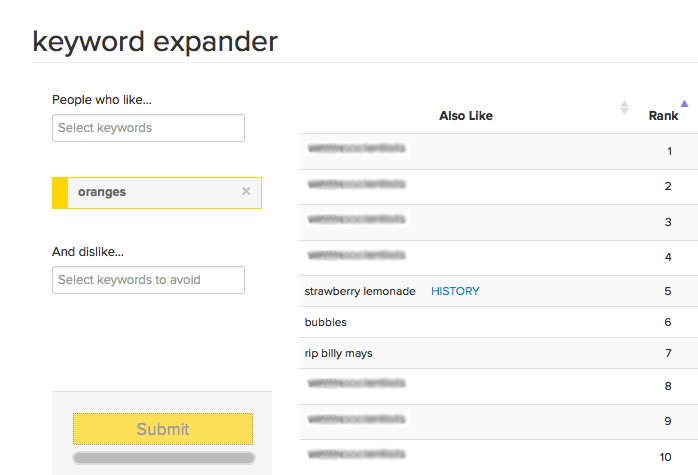Posted by simonpenson
This post was originally in YouMoz, and was promoted to the main blog because it provides great value and interest to our community. The author’s views are entirely his or her own and may not reflect the views of SEOmoz, Inc.
A transition is in effect. The web is maturing and like any form of media that has gone before it that can mean only one thing: That content is now at the epicentre of audience creation once again.
The introduction of Penguin, as we know, is forcing every online business to re-examine how it ‘does’ online marketing and begin looking for ways to grow reputation, reach and visibility via content rather than the link building practices of old.
As Google turns up the algo to promote great content and social gives us all access to the social graph and the network effect it offers there has never been a better time to get your content game in shape and pull together a killer strategy for your brand.
I recently wrote a piece for another digital marketing site that goes into a little more detail around why content is coming to the fore and so for extra context it is certainly worth a read.
In addition to the above theory one thing we do know is that all forms of media before the web have followed the same basic evolution. It starts with obsession about the technology and the iteration of it to a place where the platform has mass media reach. The end game, and the thing that gives the platform longevity, is the content shared on it. Think print, TV and radio and this is true of all of them. We don't get excited about where a paper is printed any more. Instead its about the content that's printed on it.
The web is next and in this post I want to delve a little deeper into how to structure your own content planning to take advantage of this change and maximise the reach and impact of this change.
How to Plan
Stage one of any great content strategy is the plan. Without it you will fail. Without a clear roadmap of the kinds of content you need to produce, when and for whom you’ll quickly become an also-ran.
The question is how do you first understand what you should be creating and how can you structure your plan to cater for the various personas visiting your site?
Firstly you need to understand exactly WHO your audience is. Many people, especially when they start to become more comfortable with content strategies, often overlook this; and it's key to the whole process.
The point is all men and women are not the same. Obvious, right? Well we can all be guilty of treating our audience as the same person with the same ideals, needs and beliefs. Clearly this isn't the case and so it is important to segment your audience in a way that create two, three or four 'types' – all of which get to your product or service in different ways.
To explain this, and the planning process as a whole, I organised a round table catch up (an evening of beers) with some former colleagues of mine from the world of consumer magazines to pick their brains again on the best way to structure and execute your content plan
Their view, and mine, is always to ‘keep your reader as close to you as possible in every decision you make.’
That process must follow the same basic steps:
- Understand your Brand
You cannot begin to talk about personas or content ideas before you truly have your brand values down on paper. Many businesses skip this part but you MUST know exactly what you stand for, your tone of voice, political and social allegiances etc.
To do this you must first map the strengths and weaknesses of your competitors. A simple SWOT analysis works well here as it lets you see easily where you might be able to steal a march and differentiate.

You can then align these strengths and opportunities to your brand values and begin to build a map of what you may want to ‘own’ from a content strategy perspective.
There are lots of tools out there to make this process easier too. SWOT analysis templates are available across the web while Moz's own TAGFEE core values can really help you structure your own mission statement and brand strategy. For those really interested in this area I can whole heartedly recommend spending time reading Michael Porter's work and strategies. His books make for great reading.
With this in place you can then move onto stage two…
- Understand your Audience
The plan to understand your reader is twofold; the first part is to create the ‘Typical Reader’. Here you should be specific and a great example may be:
Steve is 24 and drives a 2006 plate Range Rover Sport and he sees this as being the second most important thing in his life, after his fiancée!
He spends his time and money socialising, discussing sport, music and cars. He drinks Budweiser and occasionally a decent whiskey (as he thinks this is cool). He wears Ralph Lauren shirts but can’t afford to stretch his brand tastes further and so goes with generic jeans and shoes. To him brand is as important as the product, and it influences his buying behaviour.
The process of getting to this point is a post in its own right but the key point is to do your research well. Split it down into two specific parts:
1. Quantitative > Surveys via email and social work well for this. Ask general questions about your product or service so you can get a picture of where it sits in their lives and in their buying cycle. This can lead you to stage two, which is…
2. Qualitative > Customer focus groups, either in a pub or working with research companies and utilising controlled environments helps you to add 'colour' to the picture, enabling you to understand tone and emotive pointers etc.
From this you will usually be able to model your 'typical' client or customer, as above. You'll also be able to understand how to break the audience down into personas, each of which have more specific characteristics and ways of getting to, or interacting with what it is you are selling. For a step-by-step of using data to create them I recommend Mike King's excellent Keyword Level Demographics post.
The next step is then to nail your editorial proposition and to do this you must record your key USPs (things like ‘jargon free advice’ and ‘well written by people who understand the culture and fashions of the market’).
This is a relatively straightforward process and should get you to a point where you can easily sum up your editorial/content persona in the form of a famous person.
This is a really useful way of working as by agreeing that as a brand you are ‘John Wayne’, for instance, it becomes much easier to share tone of voice and attitude across a team, either in house or externally.
While this process is really useful to capture your core values we all know that in reality you have many different types of ‘reader’ and so the process of persona mapping is key to really ensuring your content appeals to your chosen audience.
The process of creating personas is a subject all of its own and this post cannot cover the entire process but several pieces here recently including this one and this one can help you segment your audience in a way that will help you when it comes to pulling together your content strategy.
Let’s assume then that you have followed those tips and have three or four tidy personas in place.

At this point you now have a really clear picture of who you are, your tone and editorial stance. You may even have drawn up an editorial guidelines document to steer the entire team in the same direction.
In short you are more prepared than a cub scout but structure is nothing without great ideas….
- Brainstorm Ideas
Ideas are the lifeblood of any content strategy. Without creativity your content marketing campaign is dead in the water. The good news though is that there are ways that you can make the whole process a little more structured and easier.
It is at this stage you can let your imagination run wild. If you have a team then a couple of hours in a bar or even just outside can produce a long list of crazy content concepts. Of course you don’t have to worry right now about them being realistic or actionable. The key point is to get them down on paper.
One great technique to use in recording and expanding your idea list is the use of mind maps. Bubbl.us is a great tool to use to help you do this.
Tools can help too and below is our top five for helping us isolate content ideas.

This is a great new tool to highlight trending articles and social commentary based on specific keywords. It’s a social search engine and can really help you create news or hot topic led content.

Does a similar thing to Bottlenose but in a less structured but more visually interesting way. Creates a tapestry of related tweets, images, music etc.

A popular tool for expanding on keyword ideas and the concept works well for helping you think more laterally.

A really cool tool by Optimal Social it allows you to find relationships between things that people like. So people that like (insert keyword) also like XXX. This has obvious benefits and can also help with persona creation. Free registration required.

A popular one around these parts and for good reason; it may not be flashy but it does a great job of pulling in content ideas from a number of useful sources into one Google Doc.
Together these and some good old fashion thinking time can produce a great list of ideas, which will then need refining, which brings us onto the next stage.
- Segment your content types and flow
The next step is to begin organising the list you have into content types; working out the best way of presenting that concept for maximum reach.
This is where an understanding of content types comes in and the Content Matrix. This simple yet effective infographic by SmartInsight helps you understand the strengths and weaknesses of the different kinds of content you can create, while also giving you a great starting list of ideas.

It is then useful to segment your ideas into a simple table of types such as this:

- Create your content plan
I wrote this on the YouMoz blog last year as a introduction to content planning and it contains some useful elements around beginning to structure your editorial calendar, or plan, by using key elements.
The key part of the process though is ensuring you achieve the right flow.
Every great content schedule, whether it’s for TV, radio or any other media has peaks and troughs as you must have the small to appreciate the big stuff.
If you examine the very best musical pieces they are built in the same way and you should think of your content plan in the same way.
Create a planner as you wish. The one we use is shown below and captures the following elements. If you want a copy simply email us at infoatzazzlemedia.co.uk and we’d be glad to send you a copy.

The basics are that you segment as you would with a normal calendar with months and weeks. The key is then how you transplant the ideas you have into it.
Alongside ideas we capture key dates in the calendar. So in our example as a fitness website we might include key exhibition dates, official Get Fit weeks, peak times of the season such as January and so on. This work helps us capture the visitor’s general mood and frame of mind too and this helps you create content as a solution.
The key piece is getting the flow right and this is where the work done on content type is important as it enables you to then fill in the weeks with a view on what kind of content will follow each other well.
Timing too is important. Huge amounts of effort and many 'column inches' have been put into measuring and understanding the timing of social media activity and the same is true of other content. During a stint working for the UK's biggest golf media brand we discovered that sending a newsletter on a Friday full of equipment reviews etc worked amazingly well as the 'reader' believed that they were about to shoot the round of their lives that weekend, and wanted all the kit to do it with. Come Monday though reality had set in and so we would send a newsletter full of tips to help them improve!
Dan Zarella's blog is great for insight around social sharing and I would suggest you spend some time here absorbing that data to help you build your own content plan.
The other secret is then creating both ‘big bang’ and smaller regular content ideas and get them to work in unison, but that’s a post for another day.
Simon Penson is MD and founder of Zazzle Media, a UK based content marketing and technical optimisation agency.
Sign up for The Moz Top 10, a semimonthly mailer updating you on the top ten hottest pieces of SEO news, tips, and rad links uncovered by the Moz team. Think of it as your exclusive digest of stuff you don’t have time to hunt down but want to read!
More: SEOmoz Daily SEO Blog
